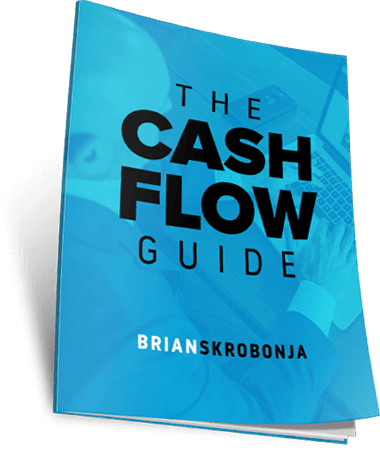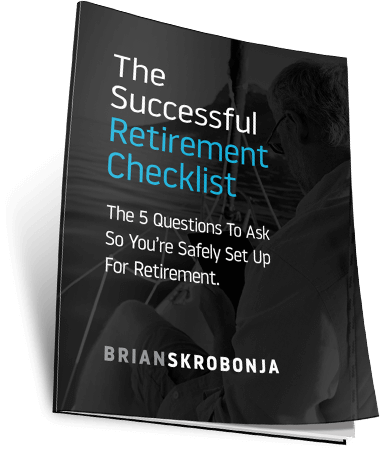“The Truth Will Set You Free!”
This is a phrase we have all heard. It originated in the New Testament in John 8:32, when Jesus said to the new believers, “you will know the truth, and the truth will set you free.”
Whether you are trying to figure out the destination of your soul and the meaning of life, or simply trying to figure out how to be smart with money and build real wealth, you have to know the truth.
You have to know what is real and not just theory, what is fact and not fiction, what is truth and not just opinion.
Opinions are like a beating heart; everyone has one and they flow from each of us like breath. However, you have to protect yourself from being a collector of opinions and be a seeker of truth.
People often speak with confidence when sharing their theories, ideas, and opinions explaining them as facts.
People also tend to show only what they want you to see.
Social media is a huge part of our society these days. If you spend any time on it at all you quickly discover that everyone is more successful than you are, they have nicer cars, take nicer vacations and their family is better than yours.
That is all of course a lie, but it can still leave you having these feelings and the feelings can drive behavior.
It doesn’t have to be social media, it can be anything that influences your way of thinking.
All can lead to irrational decision making, financial mistakes, and living in this gap between fact and fiction.
The Gap is the space between what you think you should be doing and what you actually should be doing.…It is this space between what you think you know and what you don’t know.
The biggest financial mistakes are made in this gap.
This leads right into the first gap, The Mindset Gap
The Mindset Gap
You hear me talk a lot about mindset and there is a reason for that; how you perceive things is how you respond to things.
What you focus on is what you ultimately get.
Who you surround yourself with is what you become.
It all has an influence on how you think. It creates this gap between what you are doing and what you should be doing.
That is the mindset gap.
We all have it. It’s just a matter of how quickly we work to form a bridge to learning what we don’t know.
The Cash Flow Gap
It is surprising to me how few people understand this and make the financial mistake of not utilizing this key strategy for building wealth. If you did only one thing different in 2020, this would be it.
So many people perform their daily routines to create income, spend money to get through their weeks, and live their life on autopilot staying within the lines.
But what if there was a better way to approach your financial life that gave you more flexibility, more freedom and more confidence in your future?
There are two parts to this.
First is how much money you need to do everything you’re wanting to do. This includes lifestyle, one-time expenses throughout the year and big-ticket purchases.
Don’t assume I am talking about a monthly budget; I am not.
Budgets don’t work because they concentrate on HOW you spend money and simply ignore big-ticket expenses.
Cash flow is about WHAT you need money for giving you the opportunity to control the outcome.
Most people focus on accumulating then spending money. They earn and spend.
The problem with this is that you always have to accumulate money in order to spend it.
What if you redirected your focus and instead of accumulating and spending you created passive income to spend?
The goal for achieving financial independence is centered on replacing income. Its you not having to work to create income but rather have your assets creating income.
The gap is the difference between how much income you have to generate yourself versus how much income is passively created to live your life.
The Age Gap
Have you ever stopped and pondered why everyone talks about retirement at age 65?
The age is quite arbitrary when you think about it. Though it is tied to government benefits, it is not a mandate to have to wait until the government says its ok.
It is simply the result of a mindset revolving around what others have done who are dependent on government benefits. Their planning, or lack of, resulted in them retiring at 65. That it doesn’t mean that is what you should or need to do.
It is a perfect example of the power of mindset.
Do you have a mindset of retiring at 65?
What if you began to tell your friends that you have a plan mapped out to retire at age 50?
What do you think their response would be? Surprised, puzzled, a doubter?
After all, it’s not “normal”.
Go in the other direction with working beyond age 65.
I have several clients who are in their seventies and still working.
Not because they have to but simply because they want to…they just enjoy working and doing what they do.
When you ask them how people respond to them still working, they will say that people ask them repeatedly when they are going to retire.
It’s almost like they are doing something wrong.
The age gap is simply what is possible for you versus what is assumed for you.
The Debt Gap
There are so many different circumstances and scenarios when it comes to debt that it makes it impossible to get into the gaps of them all.
Instead, I will concentrate on one specific financial mistake I see repeatedly: approaching all debt as if it were bad debt driven by consumption.
As the name suggests, “consumption” or “consumer debt” is for consuming things such as credit cards, auto loans, etc.
In other words, it is just buying stuff.
This type of debt is considered bad because there is nothing to show from it. What was bought is consumed and worth less than when you bought it if worth anything at all.
Acquiring the debt to make consumer purchases does nothing to help create wealth. It is a net negative.
However, there is good debt that can help create wealth, such as business loans, home mortgages, and rental property loans.
This is where the gap exists because there are a large percentage of people who cannot differentiate between the two types.
Some will aggressively use up their resources to pay down good debts as if they were bad debts.
They give up time, energy, and resources toward paying off good debt.
This is a gap because they don’t realize that they are giving wealth away.
When you understand the difference between good and bad debt you can begin to leverage this knowledge to create wealth.
If you maintain a mindset that all debt is bad and needs to be paid off, then you have opportunity cost that robs you of wealth. This also gives you less control of your money.
It is helpful to understand what good debt is.
A good debt is used to purchase an asset that has current value and the potential for creating wealth.
In other words, the amount owed on the asset is equal to or less than what the value of the asset is.
This is a net zero or net positive.
Think about these examples…
- A business purchased should be valued at or above what you paid for it and can generate profits as it operates.
- A home purchased should be valued at or above what you paid for it and can appreciate over time.
- A rental property should be valued at or above what you paid for it, can provide net monthly revenue from rents and can appreciate over time.
These assets could be sold to repay the loan and should be appreciating in value.
Consider this: whether a debt is good or bad, all debt has an amortization schedule and whether you spend time, energy and resources toward accelerating the process or not, it will get paid off.
A better and more profitable use of time, energy and resources is to focus on building assets that appreciate over time and that create cash flow.
This is where smart money flows. Money flowing to pay off good debt in my opinion is missed opportunity for building wealth.
This is the debt gap and it comes with opportunity costs. The quicker you close the gap, the quicker you will see wealth being created.
The Insurance Gap
Insurance is one of those things that come with many variables and misguided opinions.
Until you have experienced firsthand the difficulties that families experience from poor planning or simply ignoring the facts, you really can’t appreciate the significance insurance plays in a financial plan.
People love to hate on insurance companies and often look at insurance as a commodity seeking the lowest premiums.
The fact is that cheaper is not always better and less is not always best.
For the most part, people are underinsured across the board when it comes to life, long term care and disability coverage.
It is a problem and leaves a pretty big gap to fill.
Some families get lucky, but others don’t and unfortunately there is no way to know ahead of time what is needed.
The gap for this is knowing where you are, compared to how much and what coverages you should actually have in place.
The Investment Gap
The biggest gap for investors is between what they perceive is diversification and what diversification really is.
I have addressed this issue in other podcasts, and it remains at the top of the gap list of financial mistakes.
When it comes to diversification, you have to think of it as risk management.
It is the allocation of different assets to spread out your exposure to risk.
How to do this is where the gap forms because there are many different philosophies and angles to take with this.
What I have discovered to be a major problem is the lack of product diversification.
Often people migrate toward the idea of spreading risk amongst the same product type.
You see, there are many investment types…institutional investments, alternatives, annuities, life insurance, managed and passive investments.
And there are several asset classes… US equities, international, real estate, commodities, amongst many others.
Instead of thinking vertically in one type of asset class or investment type, you should think horizontally to properly diversify.
A well-thought-out strategy will often combine passive, managed and institutional investments, along with alternatives, annuities, and life insurance to achieve a level of diversification not possible with only one approach.
If you are only in mutual funds in your 401k and IRA accounts, you have a gap between where you are and what is being discussed here.
You should consider product types as well as asset classes; otherwise we work against the entire paradigm of diversification.
The Legal Gap
When it comes to the legal work it boils down to simply having things in order.
Whether it is end of life decisions, someone to execute financial transactions on your behalf, instructions for transferring your assets at your death, fulfilling charitable or family legacy intentions or protecting assets for long term care reasons, all of these things require proper legal work.
If you have a business there is being set up correctly with the IRS and the state you are operating in, buy sell agreements if you have partners, details for how your business will operate and who will own it if you die, and operating agreements.
Undoubtedly, there are holes or omissions that have formed a gap with your legal affairs. What you have in place right now may not be enough for what you need and for what you desire for yourself and your family.
This gap can wreak havoc on a family and a business. Thankfully, you can avoid a crisis with taking the time to make sure things are in order with your legal work.
Though I touched on five common gaps that cause financial mistakes, there are many others that may have formed in your life that you’re not even aware of.
That in and of itself is a gap. It’s a gap between what you know and what you don’t know.
With all that said, my team and I are here to help you identify what gaps may exists in your current situation and work with you to correct the problems.
We can help fill the information void so you can live your life with confidence.
If you’re not already following me on Facebook, YouTube, Instagram and LinkedIn, and if you’re not already subscribed to our Forbes Top 10 Rated Podcast, The Common Sense Financial Podcast, take time to do that right now.
And if you have specific questions, or are looking for an advisor to help you navigate these important decisions reach out to us here.







